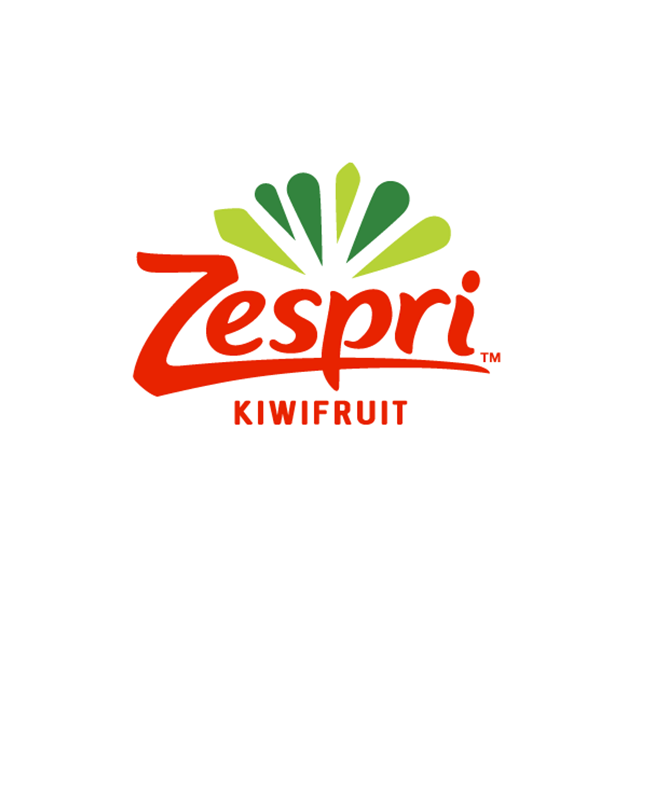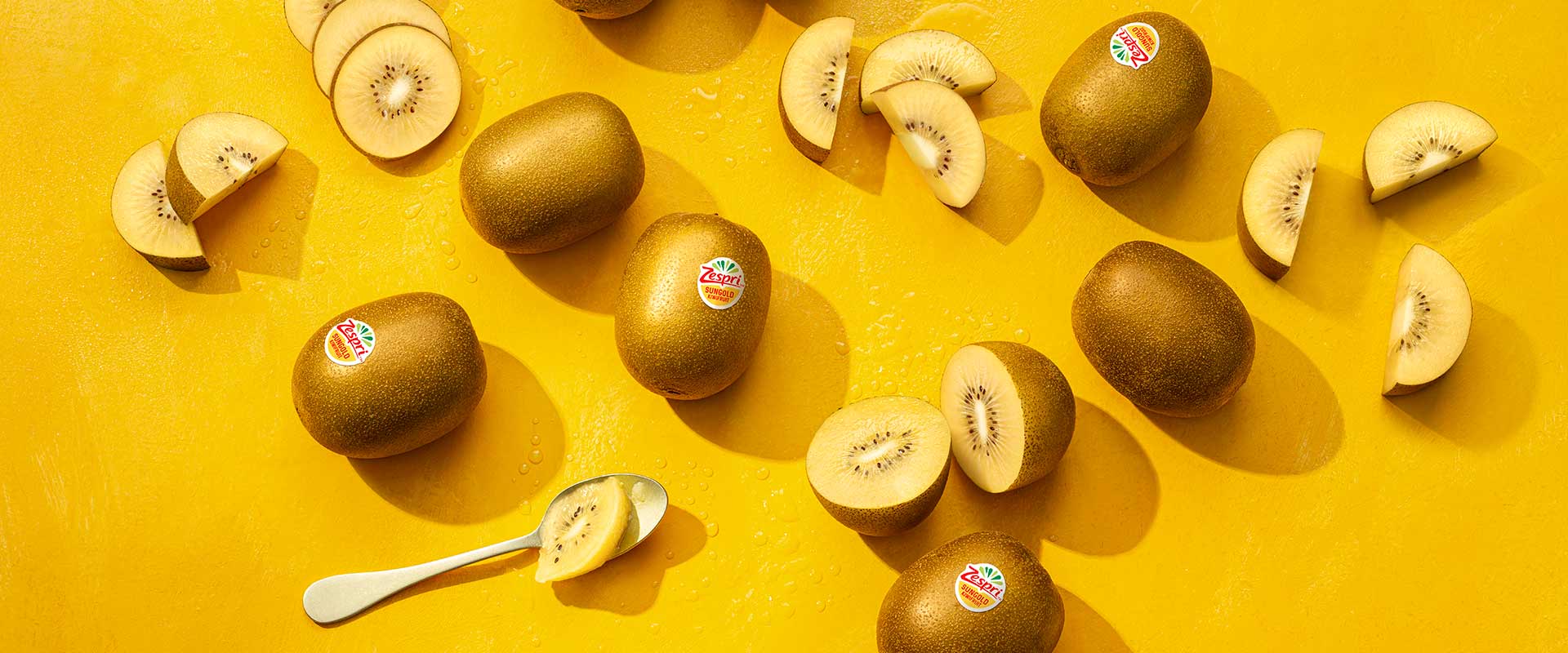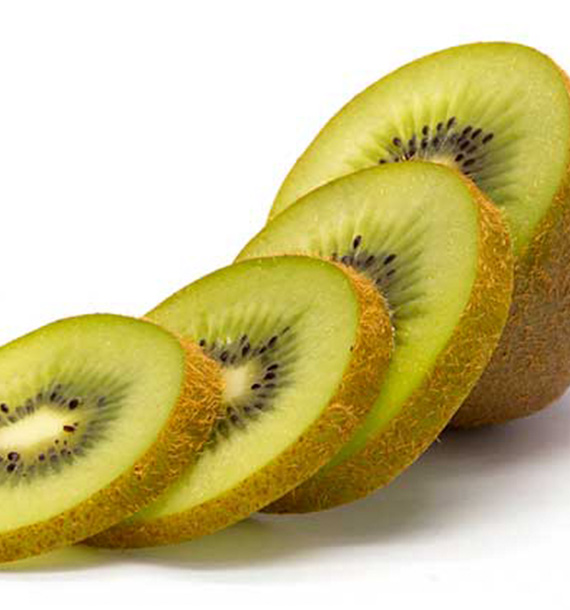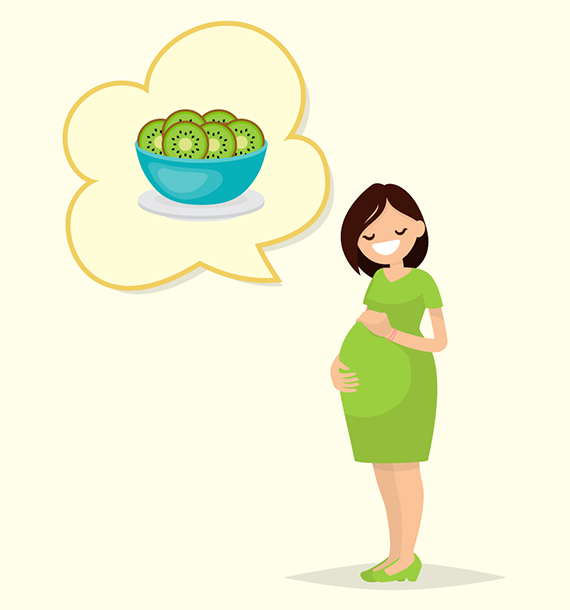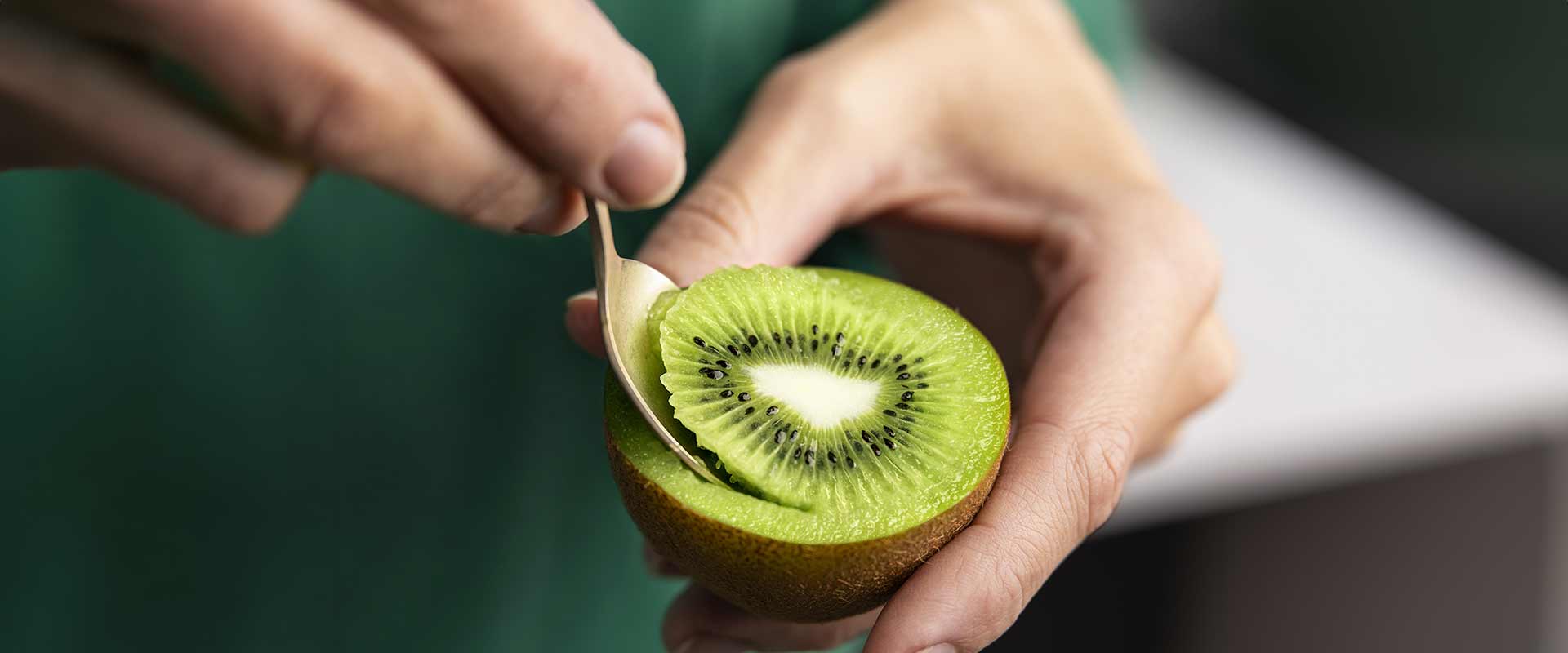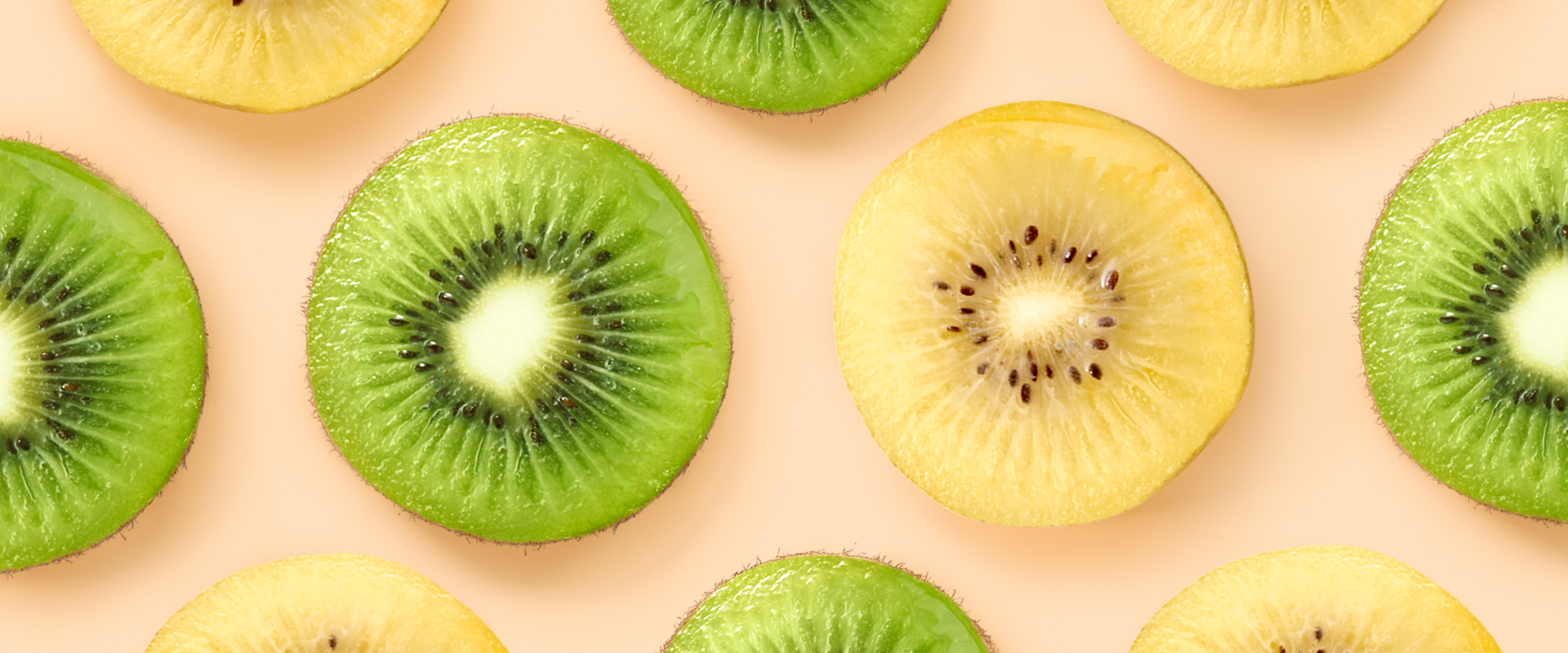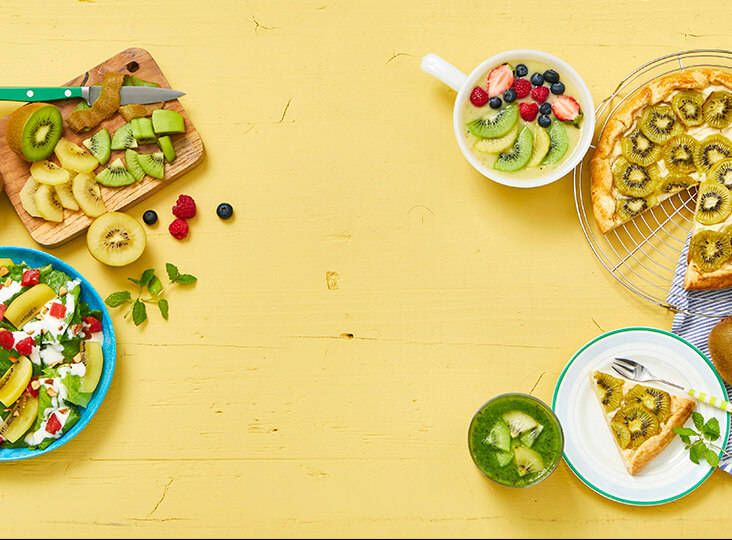Yellow Kiwifruit: Origin, Properties and Benefits
-
Zespri SunGold kiwifruit
-
Vitamin C
-
Potassium
-
Fibre
-
Folic Acid
If you’ve never tried a golden or yellow kiwifruit before, then you’re in for a treat.
Zespri™ SunGold™ kiwifruit is a sweeter, slightly tropical version of the traditional green variety – destined to be a fan favourite! Yellow kiwifruit doesn’t just have a unique colour and flavour, it also has a whole range of benefits that make it a popular choice for smart snackers.
What is the origin of the yellow kiwifruit?
It’s time for a fun fact…
During the 1990s, Zespri™ began cultivating a new variety of kiwifruit, developed through our natural breeding program and run in partnership with New Zealand Plant and Food. This new yellow-fleshed gold variety was less furry than the green variety, with a sweeter, more tropical taste.
What are the main properties of the yellow kiwifruit?
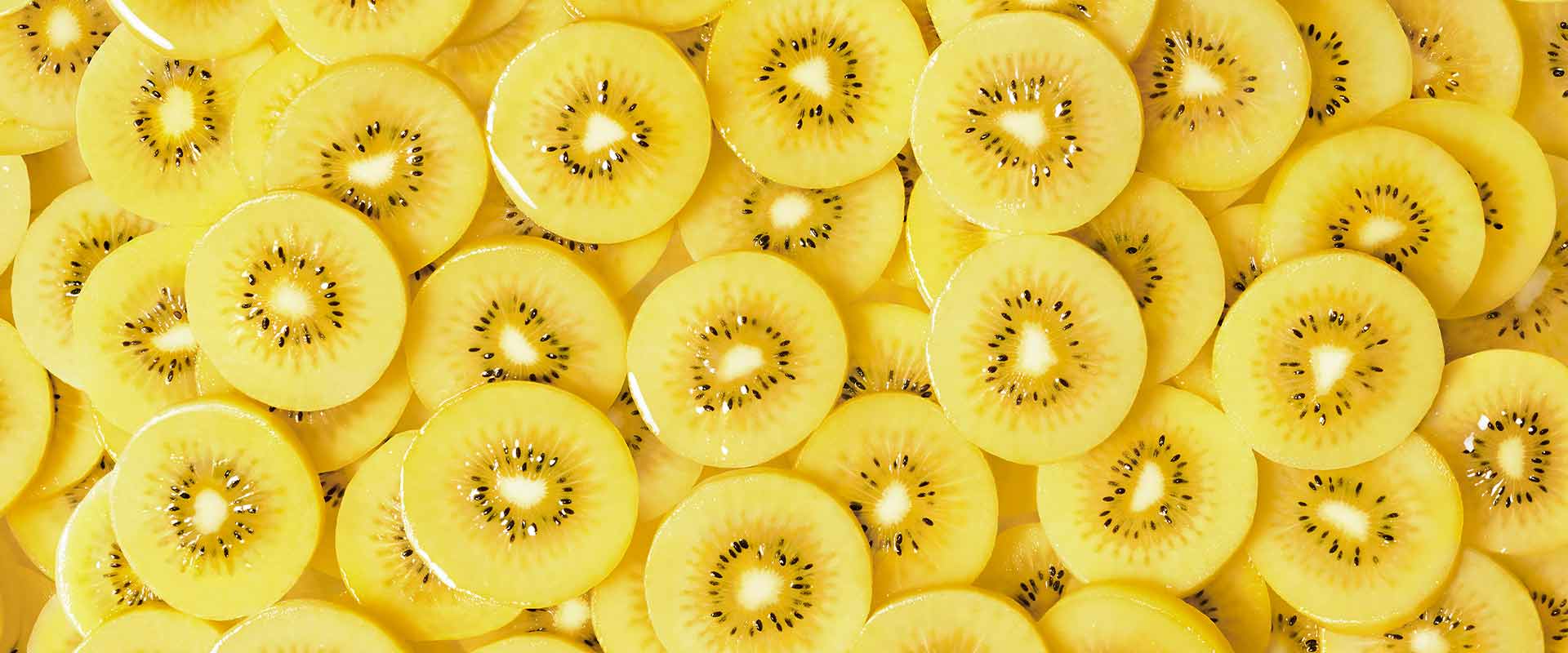
Aside from its distinctive flavour, attractive colour, and great nutritional profile, yellow kiwifruit has a magical property you may never have heard about: it sweetens as it ripens! That’s right – after a couple of days in the fridge, golden kiwifruit becomes softer, sweeter and even juicier – perfect for making a dessert or sweet snack.
The smooth texture of yellow kiwifruit also means it is easy to crush or puree, which is why you’ll love using it in smoothies or homemade ice creams. But that’s not all. The sweet taste of yellow kiwifruit can also add a special touch to savoury meals – you have to try it to believe it!
Ready to explore the exciting world where sweet meets savoury? Then why not start with this recipe for vichyssoise with kiwifruit. Vichyssoise is a French soup made with potatoes and leeks, but this version is anything but traditional – we’ve added a sweet yellow kiwifruit twist to a much-loved classic. Ooh la la!
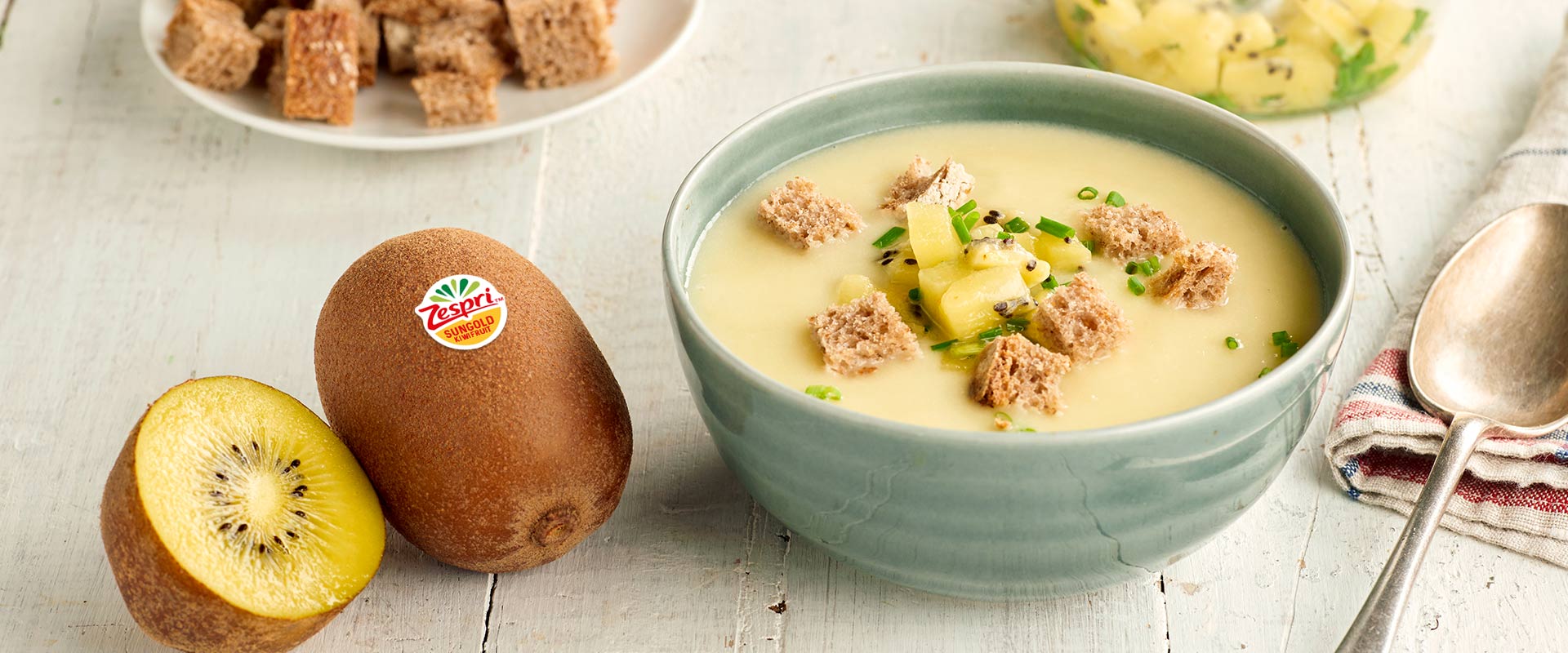
What are the health benefits of eating yellow kiwifruit?
SunGold™ kiwifruit is naturally high in vitamin C*, a powerful antioxidant that keeps our immune system functioning normally and helps take care of our defences. Since our body can’t produce this nutrient, the best way to maintain optimal levels is to include vitamin-C rich foods in our daily diet. That’s easy when it comes to yellow kiwifruit – just one delicious piece provides 100% of your daily vitamin C needs**.
But apart from helping you stay strong, yellow kiwifruit also has another important health benefit: it can help satisfy your sweet tooth. With only 54 kcal per 100g, it’s the healthy choice for smart snackers!
* Zespri™ SunGold™ contains 152mg of vitamin C per 100g
** One piece over 53g provides 100% of the recommended vitamin C daily value; Zespri™ SunGold™ kiwifruit average weight: 89.7g
What are the differences between green kiwifruit and yellow kiwifruit?
Difference 1: Taste
The yellow kiwifruit is for all you lovers of sweet taste out there. Whilst Zespri™ Green kiwifruit brings zest and zing, the SunGold™ kiwifruit is juicy and sweet.
Difference 2: Appearance
Visually, you’ll see a fairly striking difference between our green and yellow varieties. Green kiwifruit has a fuzzy brown skin and oval shape, whilst yellow kiwifruit has smooth, hairless skin with a nice golden-brown colour. Slicing the fruit in half reveals even more differences. Green kiwifruit has a green flesh with black seeds, whilst our golden kiwifruit has a vibrant yellow flesh with a smaller core and fewer seeds.
Difference 3: Ripening and storage
All of our kiwifruits are ready to eat when you purchase them. You can tell when a kiwifruit is ripe by giving it a gentle squeeze – it should give to slight pressure, just like a peach or an avocado. Green kiwifruit sometimes feels a little firmer, so you might want to keep them at room temperature for a few days if you prefer a softer fruit. Once kiwifruit is ripe, it can be kept in the refrigerator for 1-2 weeks.
Difference 4: Nutrition
Yellow kiwifruit is famous for its high vitamin C content, whereas green kiwifruit is known for being naturally rich in fibre. Saying that, they are both excellent sources of a wide selection of nutrients– so it’s really up to your taste buds which you decide to choose on a particular day!
Don’t forget – both varieties are packed full of vitamins and minerals, are low in calories, and contain no fat, cholesterol, or sodium.
How should you choose a yellow kiwifruit?
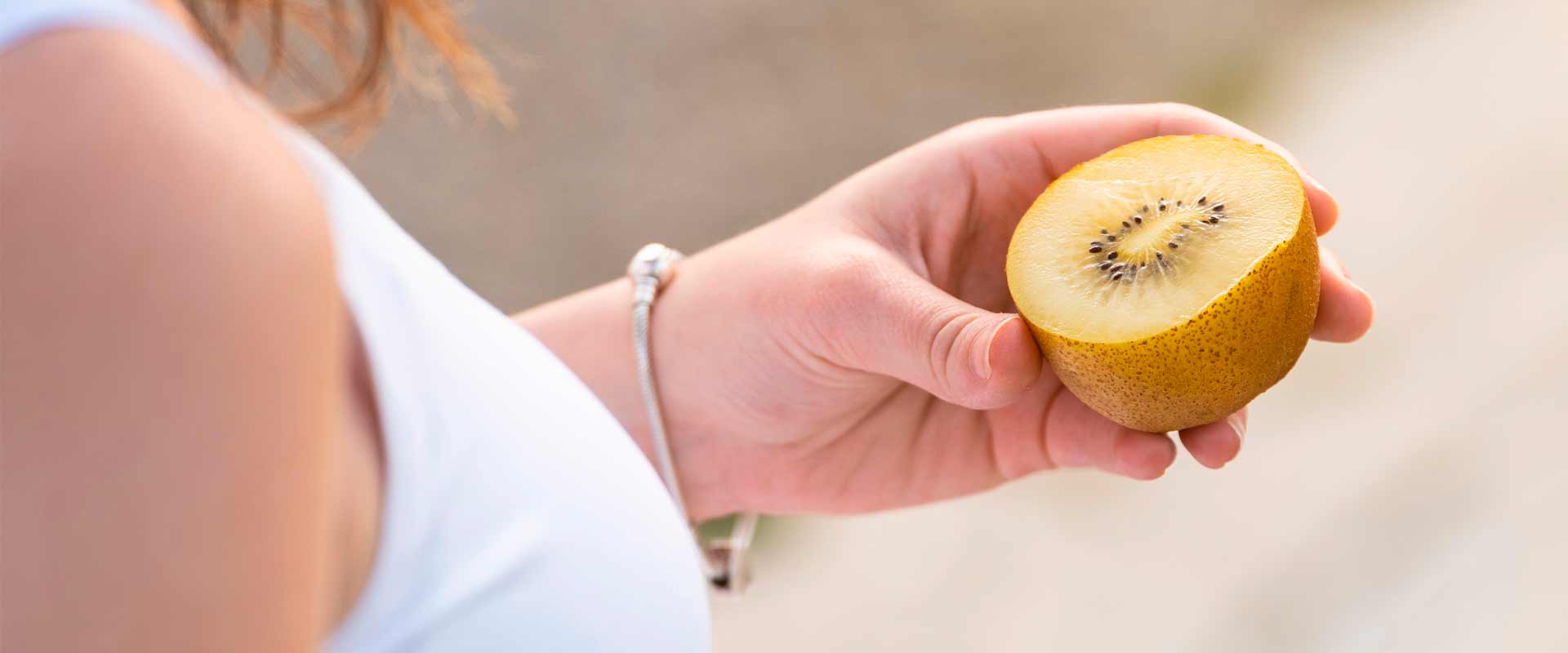
When you are looking for an instant snack, choose golden kiwifruit that have a tight skin that is slightly soft to the touch. These will have the sweetest, fruitiest, and tangiest flesh!
Of course, if you want your kiwifruit to last longer, you can always choose a firmer fruit. Alternatively, if you are looking for soft sweetness, accelerate the ripening process by putting your gold kiwifruit in a paper bag with other fruits such as bananas or apples.
Quiz time!
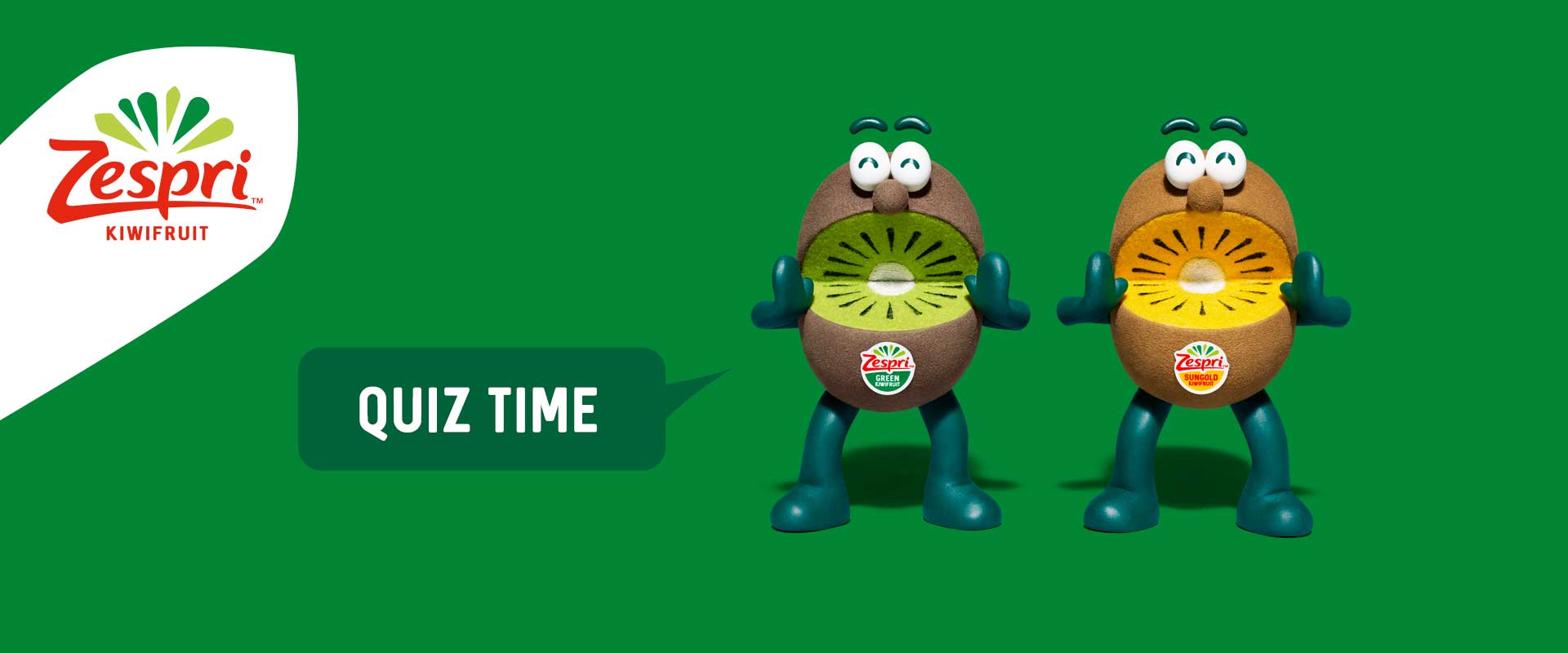
Now you’ve read about the origins, properties, and benefits of yellow kiwifruit, it’s time to put your knowledge to the test. Answer these three questions correctly and you can confidently call yourself a golden kiwifruit expert!
Question 1: What is the magical property of yellow kiwifruit?
a) It becomes more golden as it ripens
b) It becomes sweeter as it ripens
c) It becomes zestier as it ripens
Answer: C!
Question 2: Which of the following is a health benefit of yellow kiwifruit?
a) It contains 100% of your daily vitamin C needs in one piece of fruit
b) It can satisfy your sweet tooth
c) It has a variety of essential vitamins and minerals
d) All of the above
Answer: D!
Question 3: How do you know when a yellow kiwifruit is ripe?
a) It gives to slight pressure, like an avocado or peach
b) It is very firm to the touch
c) It’s got a furry skin
Answer: A!
